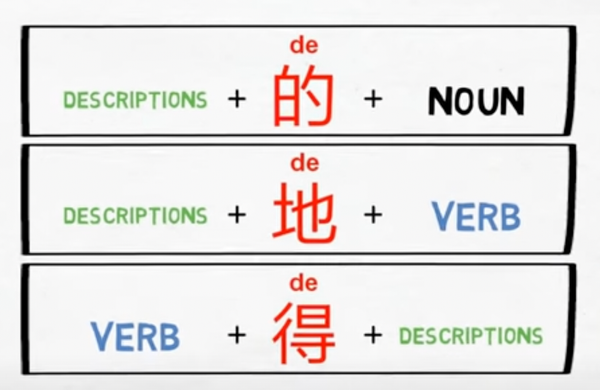0

How to use structural particle 的 地 得 in Chinese
5 years agoFor lots of Chinese learners, the usage of the three structural particles 的 地 得 is a bit confusing. Today I'll try to explain it to you.
的 (de) for modifying nouns
地 (de), for modifying adjectives (into adverbs)
得 (de), for modifying verbs

1. descriptions + 的 +noun
The description can be noun/adjective/verb or clause, I'll give you an example of each of them
- n + 的 + n
(in this case, the 的 is a possessive particle, like" 's" in English)
妈妈的手机。Mom's phone.
- adj + 的 + n
可爱的猫。Cute cat.
- verb + 的 + n
喝的东西。 Things to drink
- clause + 的 + n
有一只猫的女生。The girl who has a cat.
(It’s the other way around to English. The clause that you use to describe the noun comes first)
2. descriptions + 地 + verb
地 is used to turn adjectives into adverbs, you can understand it like the suffix "ly" in English.
她开心地回家了。She went home happy.
3. verb + 得 + description
得 coming directly after the verb connects the verb with an adjective to describe how the verb is carried out or the result of the verb.
玩得开心。Have fun.
吃得高兴。Eat well.
